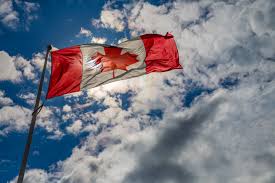On methane regs, Canada must stand tall against industry
 In a sign of growing recognition of the global methane opportunity, the Government of Canada today proposed new regulations that aim to curb methane emissions across the Canadian oil and gas industry. This marks the first regulatory package to be introduced by the Trudeau administration for Canada to meet its overall climate goals. Now that the proposal is out, the draft federal methane rules will be open for public comment before they are finalized later this year. The new rules, if passed, will reduce waste, save money, create jobs, pollute less, and have Canada keep pace with jurisdictions across the globe that are addressing methane.
In a sign of growing recognition of the global methane opportunity, the Government of Canada today proposed new regulations that aim to curb methane emissions across the Canadian oil and gas industry. This marks the first regulatory package to be introduced by the Trudeau administration for Canada to meet its overall climate goals. Now that the proposal is out, the draft federal methane rules will be open for public comment before they are finalized later this year. The new rules, if passed, will reduce waste, save money, create jobs, pollute less, and have Canada keep pace with jurisdictions across the globe that are addressing methane.
Methane is an extremely potent greenhouse gas with over 80 times the warming power of carbon dioxide for the first 20 years it’s in the atmosphere. A common byproduct of oil production, methane is also used widely in the form of natural gas. This means that there is an incentive for oil and gas companies to control these emissions and stop needless energy waste.
During the lead up to the release of the Canadian methane rules, however, the inverse proved true. The Canadian oil and gas lobby worked to weaken and delay implementation of the proposed regulations. Because of concessions that have already been made to appease industry, Canada now has ground to make up to retain its ability to deliver on its climate goals.
Here are four opportunities for Canada to do just that:
- Reset the Timeline
The most significant watering down of the regulations was the delayed implementation timetable by as much as three years. These delays will allow an estimated 55 million tons of additional greenhouse gas emissions. Trudeau needs to reset the timetable so the regulations begin in 2019 (not 2020) and full implementation occurs by 2022 (not 2023).
- Require Quarterly Leak Inspections
Leaks are one of the largest sources of methane emissions in Canada. A recent study from the David Suzuki Foundation found significantly more emissions were escaping from Canadian oil and gas operations, suggesting that there are actually more leaks than what is being reported. However, operators are not currently required to look for, let alone fix these leaks at most oil and gas facilities. This doesn’t pass the common sense test. After all, how can industry reduce these leaks if they don’t even have to look for them?
Methane is invisible and odorless, and many leaks are intermittent. So, if you’re not looking for leaks, you won’t find them. The scientific literature is clear that with more frequent monitoring, the more likely you are to catch and fix leaks. This is a central reason why quarterly leak detection and repair is required in some capacity by both federal and state regulations across the U.S. Canada’s federal proposal calls for inspections only three times a year, but this should be improved by following best practices that have been proven in other jurisdictions.
- Tighten the “Potential to Emit” Threshold
“Potential-to-emit” (PTE) is a measurement of how much methane a facility could, in theory, emit. A recent study by Environmental Defence* shows that oil facilities have higher methane emissions than gas facilities. This is problematic because many of these high-emitting oil facilities fall below the PTE threshold in the draft regulation. This is a serious gap; you don’t let a driver with a history of speeding have a higher speed limit, so why would you let the leakiest sites avoid having to reduce their emissions? As currently proposed, the regulations would apply to facilities with a PTE greater than 60,000 cubic meters per year, but lowering this threshold and requiring systematic would ensure that the leakiest sites are included.
- Demand Real Equivalency
Many provinces are expected to develop their own oil and gas methane regulations and petition the federal government to drop federal requirements in exchange for the provincial requirements. They will maintain that these provincial regulations will achieve equivalent reductions to the federal proposal. Federal Environment and Climate Change Minister Catherine McKenna needs to ensure that what the provinces do are in fact equivalent in terms of reductions, and not just politically expedient. If they let provinces get by with weaker regulations than the federal proposal, then the federal government is explicitly allowing provinces to stymie Canada’s efforts to reach its climate goals.
Reducing methane emissions from the oil and gas industry reduces waste, creates jobs, pollutes less, and ensures Canada keeps pace with the rest of the world. Additionally, these reductions are one of the most effective and affordable ways for Canada to deliver on its climate commitments. For these promising regulations to make a meaningful impact, Canada’s leaders will have to resist the oil and gas lobby, and strengthen the rules before they’re adopted. EDF looks forward to working with the government and other concerned stakeholders to ensure this happens.
*Environmental Defence is a Canada-based organization with no affiliation to Environmental Defense Fund.











